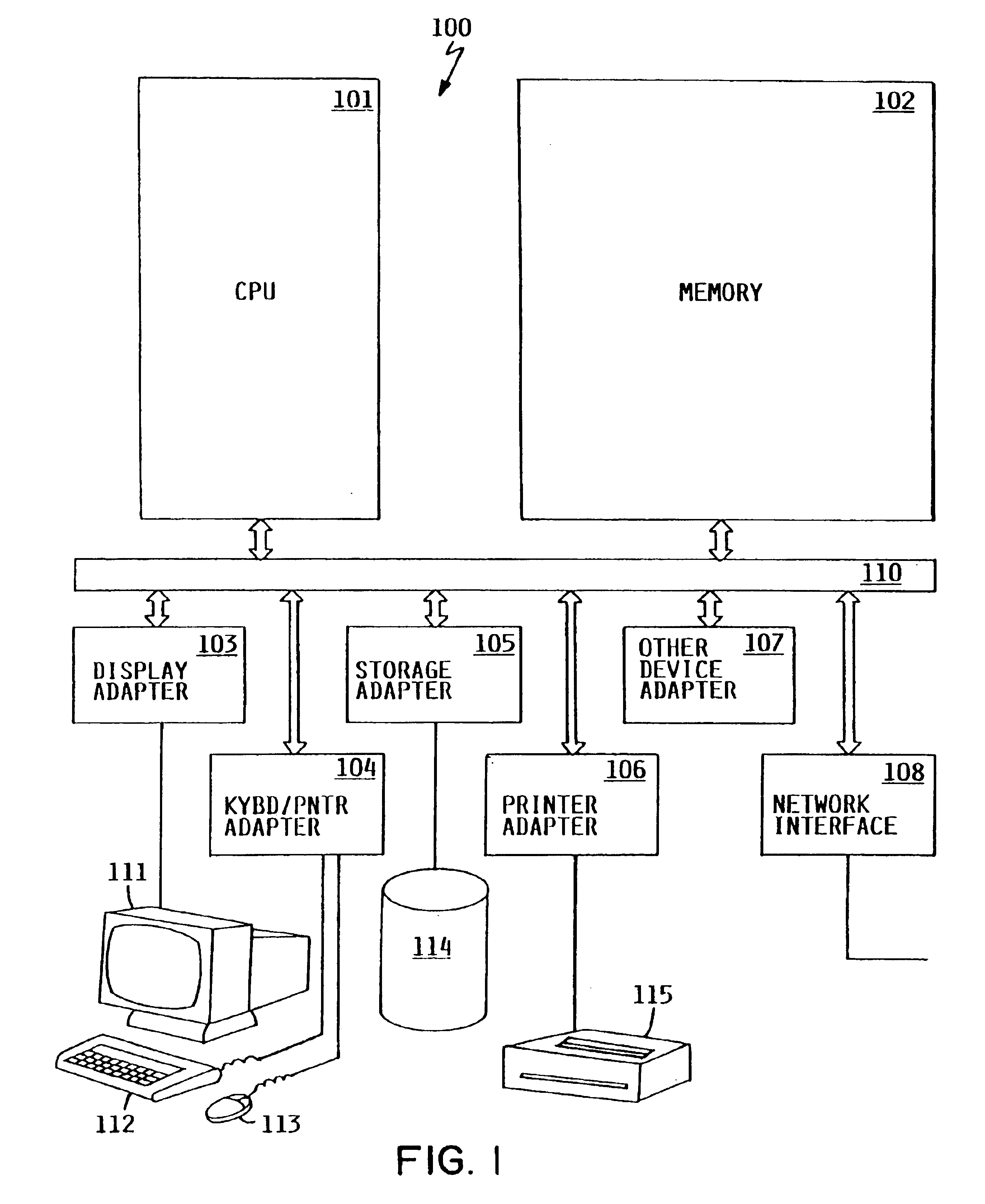Hybrid task and file oriented user interface
a task and file-oriented technology, applied in the field of computer user interfaces, can solve the problems of high cost of computer hardware and software, high cost of operating such computers, and inability to meet the needs of users, and achieve the effect of convenient switching
- Summary
- Abstract
- Description
- Claims
- Application Information
AI Technical Summary
Benefits of technology
Problems solved by technology
Method used
Image
Examples
Embodiment Construction
[0022]Referring to the Drawing, wherein like numbers denote like parts throughout the several views, FIG. 1 is a high-level block diagram of a typical interactive client workstation computer system 100, from which a user performs useful work, according to the preferred embodiment. Client workstation computer system 100 includes CPU 101, main memory 102, various device adapters and interfaces 103-108, and communications bus 110. CPU 101 is a general-purpose programmable processor, executing instructions stored in memory 102; while a single CPU is shown in FIG. 1, it should be understood that computer systems having multiple CPUs could be used. Memory 102 is a random-access semiconductor memory for storing data and programs; memory is shown conceptually as a single monolithic entity, it being understood that memory is often arranged in a hierarchy of caches and other memory devices. Communications bus 110 supports transfer of data, commands and other information between different devi...
PUM
 Login to View More
Login to View More Abstract
Description
Claims
Application Information
 Login to View More
Login to View More - R&D
- Intellectual Property
- Life Sciences
- Materials
- Tech Scout
- Unparalleled Data Quality
- Higher Quality Content
- 60% Fewer Hallucinations
Browse by: Latest US Patents, China's latest patents, Technical Efficacy Thesaurus, Application Domain, Technology Topic, Popular Technical Reports.
© 2025 PatSnap. All rights reserved.Legal|Privacy policy|Modern Slavery Act Transparency Statement|Sitemap|About US| Contact US: help@patsnap.com



